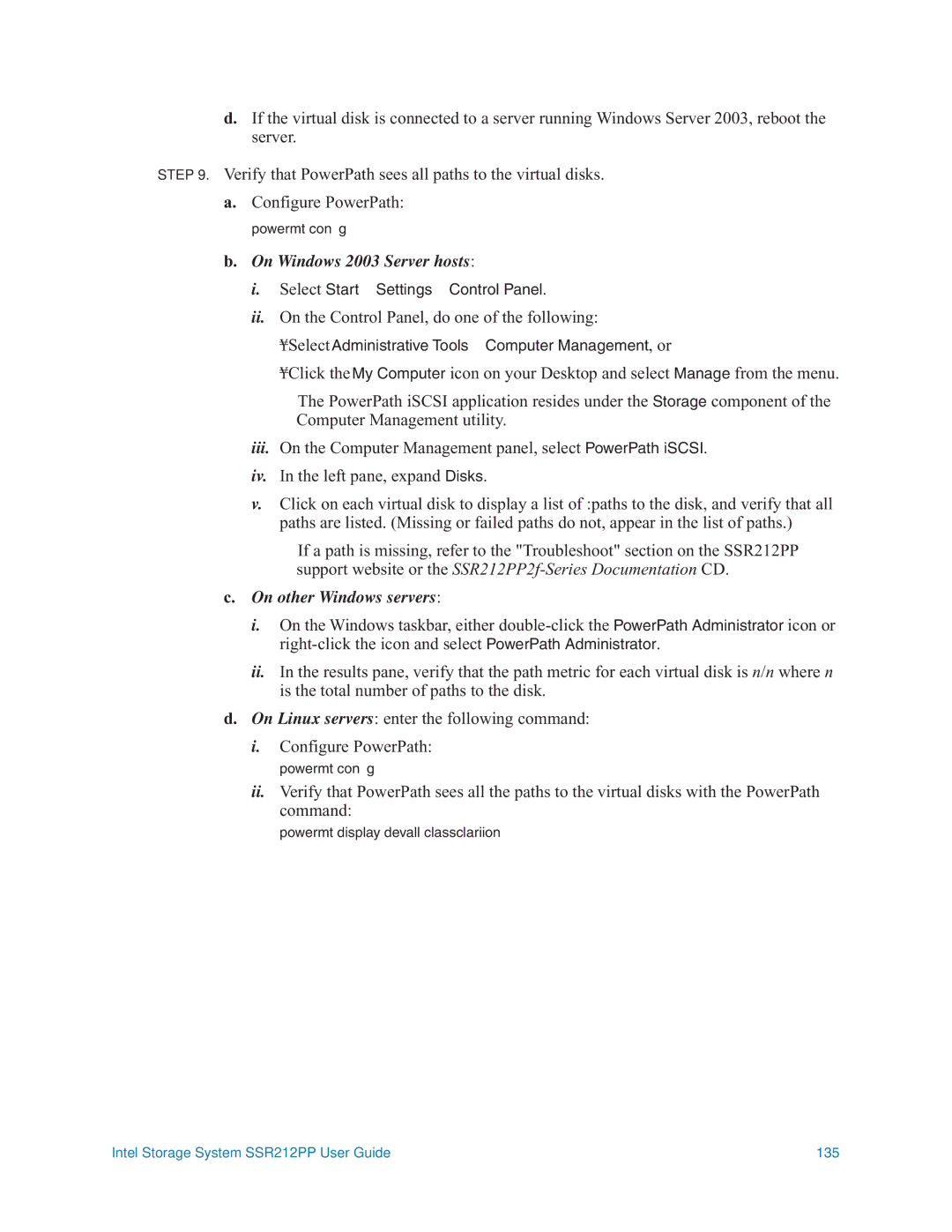d.If the virtual disk is connected to a server running Windows Server 2003, reboot the server.
STEP 9. Verify that PowerPath sees all paths to the virtual disks.
a.Configure PowerPath:
powermt config
b.On Windows 2003 Server hosts:
i.Select Start Settings Control Panel.
ii.On the Control Panel, do one of the following:
¥Select Administrative Tools Computer Management, or
¥Click the My Computer icon on your Desktop and select Manage from the menu.
The PowerPath iSCSI application resides under the Storage component of the Computer Management utility.
iii.On the Computer Management panel, select PowerPath iSCSI.
iv.In the left pane, expand Disks.
v.Click on each virtual disk to display a list of :paths to the disk, and verify that all paths are listed. (Missing or failed paths do not, appear in the list of paths.)
If a path is missing, refer to the "Troubleshoot" section on the SSR212PP support website or the
c.On other Windows servers:
i.On the Windows taskbar, either
ii.In the results pane, verify that the path metric for each virtual disk is n/n where n is the total number of paths to the disk.
d.On Linux servers: enter the following command:
i.Configure PowerPath:
powermt config
ii.Verify that PowerPath sees all the paths to the virtual disks with the PowerPath command:
powermt display dev=all class=clariion
Intel Storage System SSR212PP User Guide | 135 |
